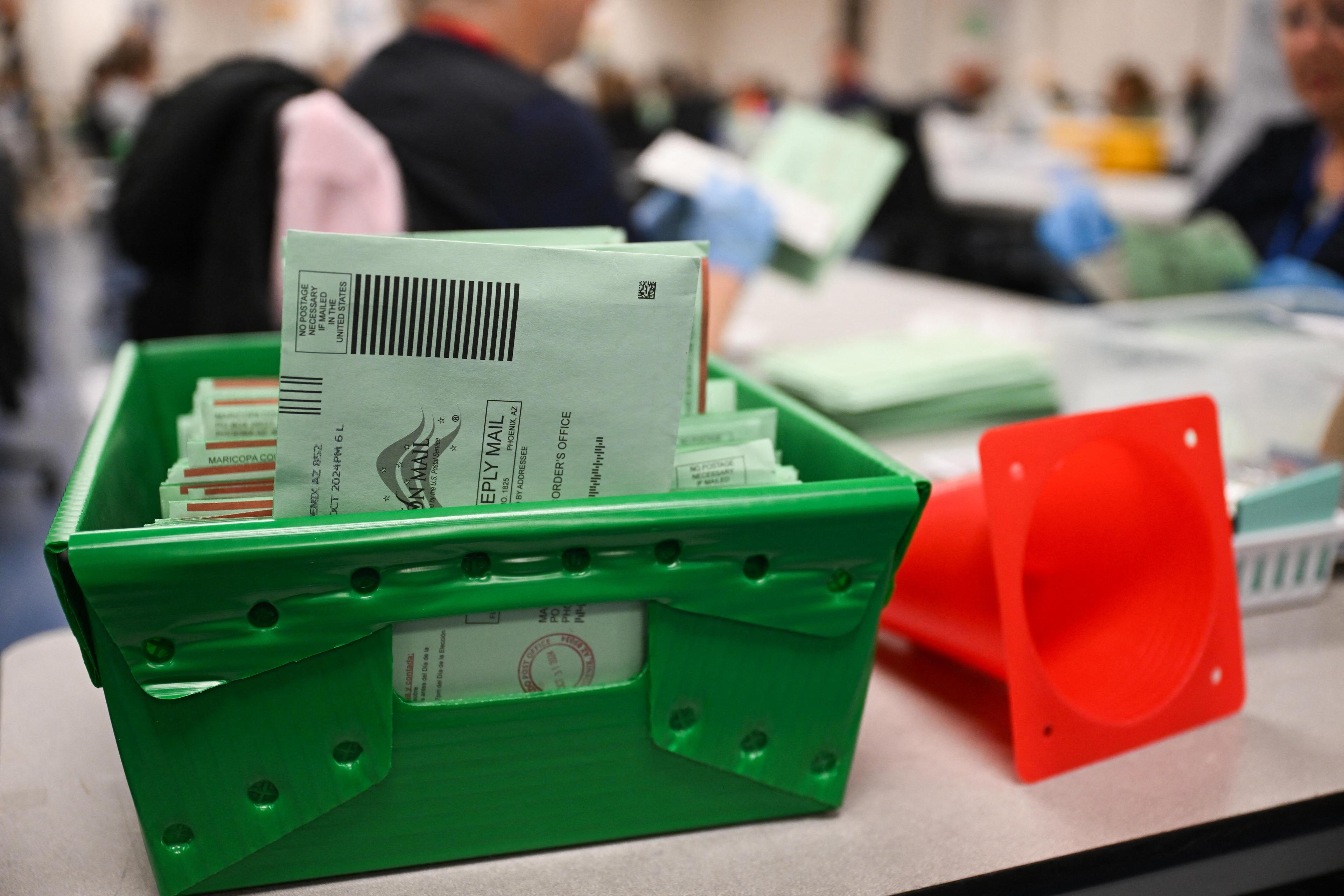
Outside a nondescript, multi-building government complex in Lakewood, it’s muggy and raining on and off. Inside, a group of about two dozen people prepares to enter another world.
They don hats and gloves and walk into a massive freezer, shelves crammed with shiny long cylindrical tubes.
This is the National Science Foundation Ice Core Facility. But they are not climate scientists, researchers or government officials. They’re doctors, nurses and other health practitioners.
“We have some ice on display that you all can look at, including a piece of ice from Greenland,” said Richard Nunn, the facility’s assistant curator. “This room is about minus 38 degrees Celsius. Cold enough to freeze your nose hairs instantly.”


The Ice Core Facility stores and studies ancient ice from glaciated regions around the globe, providing a library of the concentration of carbon in the atmosphere, telling the story of Earth’s changing climate over millennia.
“It's pretty amazing that many miles of ice is housed in that building in service to scientific research,” said Dr. Robin Richard, an internal medicine physician in Shiprock, New Mexico.
Richard said she’s stepped back from practicing medicine full time in order to advocate around climate and health “because climate change is the No. 1 public health crisis we have going on right now.”
Drought and the aridification of the region, which has driven up the amount of dust in the air and hit the farmers and ranchers she treats, has led to respiratory diseases and trouble breathing.
“There's a lot of anxiety and depression and just general stress that goes on with that,” she said.


Diploma in Climate Medicine
She and a couple dozen other health practitioners — from all over the U.S. — are here as part of the University Colorado School of Medicine’s Diploma in Climate Medicine Program. It trains clinical leaders about climate change and its health impacts.
Director and family physician Dr. Bhargavi Chekuri said it starts with a crash course on the basics.
“What is climate change and what are all of the health problems that it can cause or is already causing?” she asks.
Colorado is a good place to explore those questions. It’s home to a number of federal agencies that deal with climate. Nestled in the foothills of the Rocky Mountains in Boulder, the group meets at NCAR, the National Center for Atmospheric Research.
A scientist, joining remotely via computer screen, takes them on a deep dive into climate models, international reports, national forecasts, and impacts on things like agriculture and transportation.
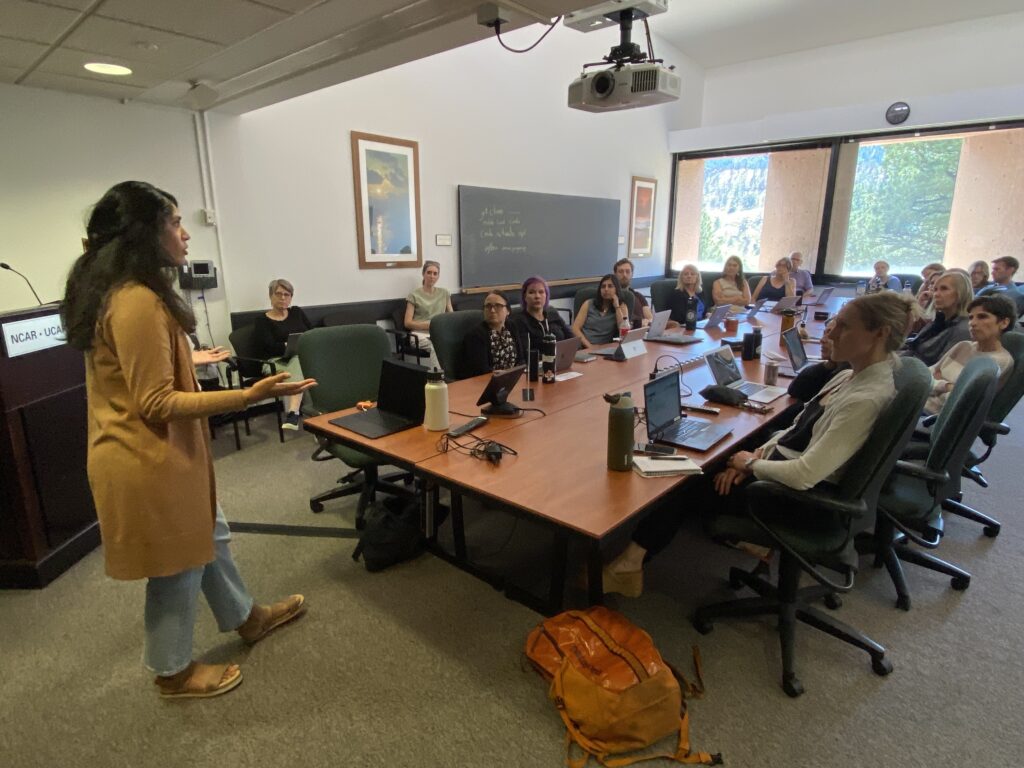

Chekuri said doctors and nurses are well-suited to learn and talk about information from air quality to intense heat to mosquito borne diseases.
“At the end of the day, I think health professionals are trusted because we just want to help our patients and we want to have healthy communities,” she said. “That's always our first priority.”
Beyond the science
The focus isn’t just the hard facts. Everyone has their own story, which they share during a narrative medicine exercise, summarizing their thoughts in 55 words. Members of the group take turns reading what they wrote. “Then, my children laughing and playing at the beach. Now, warming oceans, sea level rise,” said one.
“The summer smell of pine needles, underfoot and wildflowers on the breeze. Then your favorite places are lost,” said another. “I saw him on the way to the shelter that evening. Cracked lips dry, redden cheeks, distressed eyes meeting mine. He stood on the corner. Sun bearing down. Car fumes. Drivers look away,” said a third.
Chekuri tells the group the point is to help providers talk about what they’re seeing. “We can tell the truth about what is happening to our patients, our communities, our families, and we can tell the truth about where the science is pointing,” she said.
The diploma is a 250-hour continuing education program with five one-week certifications. They study things like environmental justice, helping health systems decarbonize and reduce their energy use and surviving disasters.
To date, 60 people have done training in one or more climate medicine diploma certificates. Most of them are physicians; the others are nurses and paramedics, and another is a physical therapist.
The program is carried on in the spirit of former co-director Dr. Terry O’Connor, an emergency physician who helped launch the program. He died in May in an avalanche in Idaho. He was 48. Chekuri credited O’Connor with being a visionary leader. “He continuously pushed the boundaries of medicine and environmental stewardship,” she said.
Health practitioners on the front lines
Rising global temperatures are having a powerful impact on Colorado, around the U.S. and across the globe, from shrinking snowpacks to extreme weather to worse wildfires. And health providers are on the front lines.
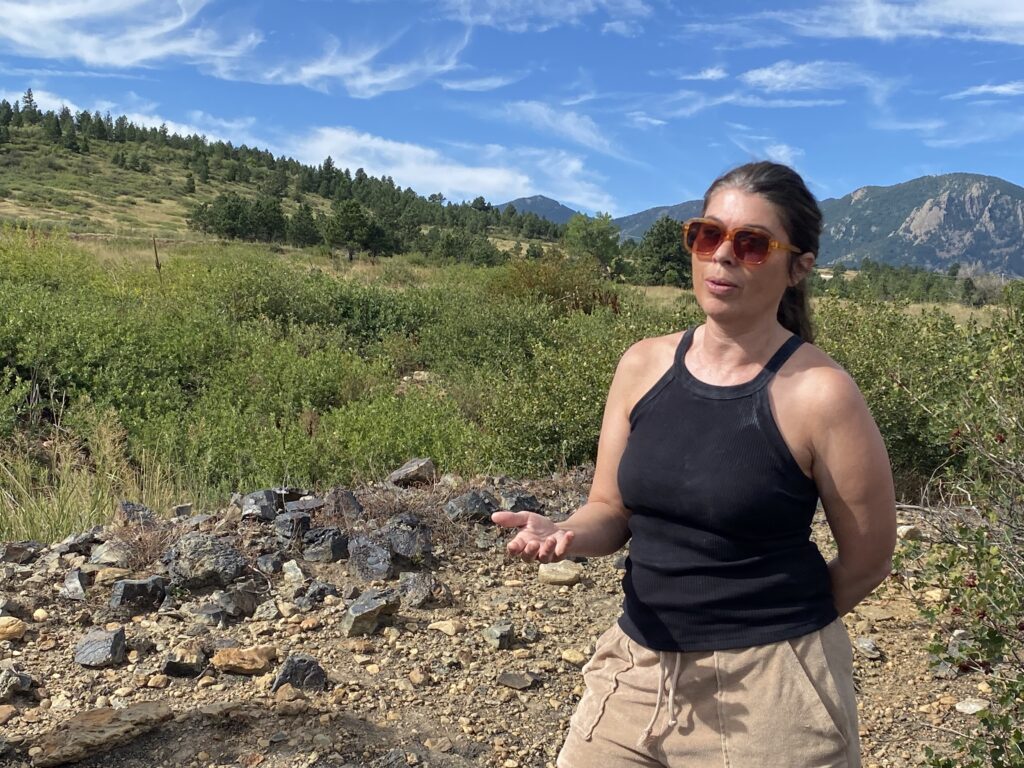

“We evacuated Kaiser Santa Rosa due to wildfire twice,” said Mary Meyer, an emergency doctor, who is in the program. She helped direct disaster preparedness for a big health system, Kaiser Northern California, for six years. During that time, wildfires in the state became much more common and extensive. “It was six years filled with disasters,” she said.
In 2017, she and her colleagues scrambled to evacuate 200 patients from the Kaiser Santa Rosa hospital, as a firestorm, the Tubbs Fire, bore down. It was the state’s most destructive ever at the time, claiming 22 lives and destroying more than 5,600 structures.
“Made us really realize that climate change had arrived really and was going to impact our healthcare organization and our ability to function, to provide health care,” she said. “Climate change is a health crisis.”
Over time they learned to plan ahead, essentially pre-evacuate and spread patients to a number of facilities, Meyer said.The silver lining of the disasters: they’d gotten to the point where they “were evacuating hospitals so much, we were getting better and better at it.”
Move evidence of a changing climate
The next day, a sunny, clear morning, the program’s group heads to the trailhead of Marshall Mesa.
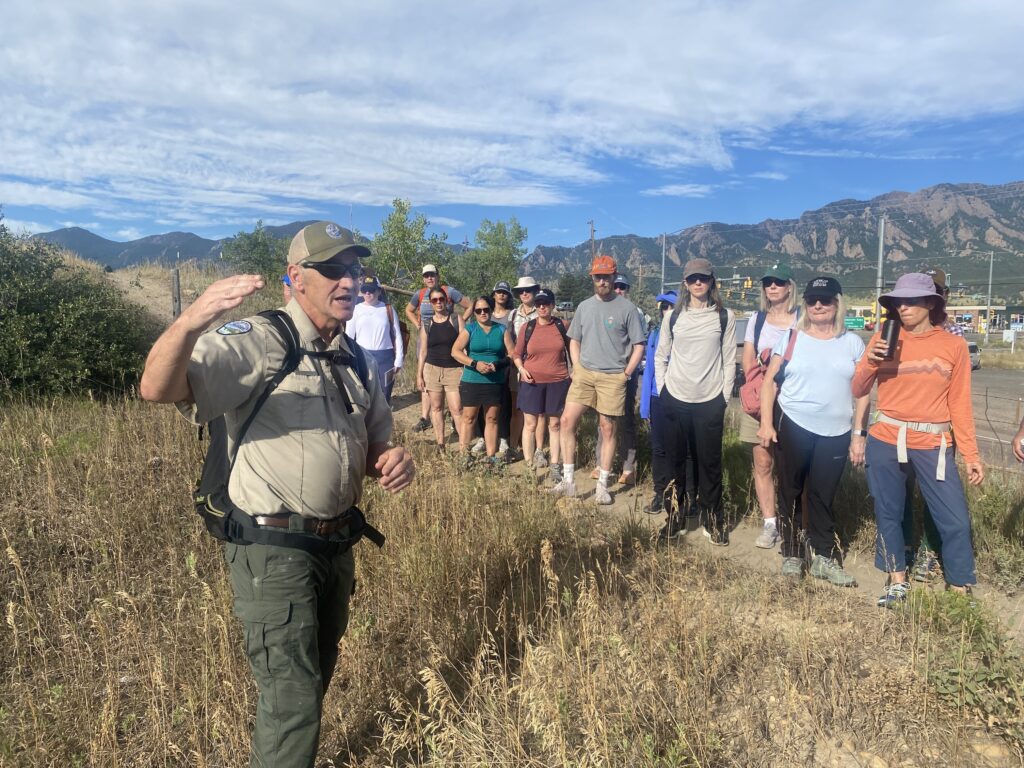

Open space ranger Dave Gustafson was there to talk about fire ecology and fire behavior. He was there December 30, 2021, an unseasonably dry, ferociously windy day when the Marshall Fire erupted.
It killed two and destroyed nearly a thousand structures to become Colorado’s most destructive ever.
Gustafson helped battle the blaze in a community that had already been coping with the pandemic and a mass shooting at a King Soopers grocery store.
“I think a big part of it is the mental effect that it has on everybody involved in the community. First responders, people that lost their houses” Gustafson said. “They all add up and put stress on our first responders.”
The health providers tramped through parts of a forest, with scattered charred trees, as he gave them an hour by hour account of the fire. It’s something Dr. Lauren Brave got to know about all too well.
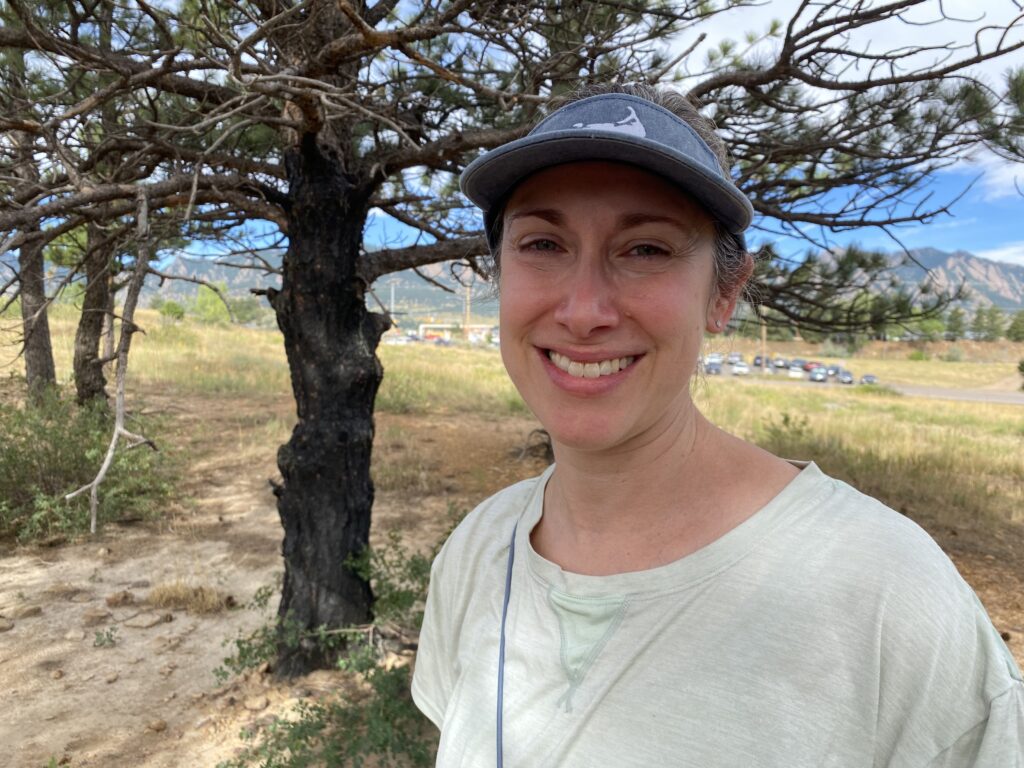

“We just didn't expect our home in Louisville to burn down. That was a giant surprise,” said the pediatrician who joined the tour.
After the Marshall Fire incinerated her home, she decided to volunteer to help push for state money for wildfire prevention and mitigation. “I think just the intersection of my profession and what happened is useful to communicate and that was sort of my coping mechanism after the fire happened.”
Health leaders as climate communicators
Some health practitioners may be weary of being out there, as advocates, especially on an issue that’s become badly politicized. Standing right near where the Marshall fire ignited, professor Ed Maibach, a Climate Diploma faculty member who specializes in public health and climate communication, said their voices are critical.
“Health professionals, they're on the front lines of climate change. And by educating them about how to do that job best, it really creates all kinds of new possibilities to wake us as a country and as humanity up to the realities of climate change,” he said.
The diploma program also teaches about health care system decarbonization, aiming to save energy and eventually go fossil fuel free through energy efficiency and use of renewable fuels.
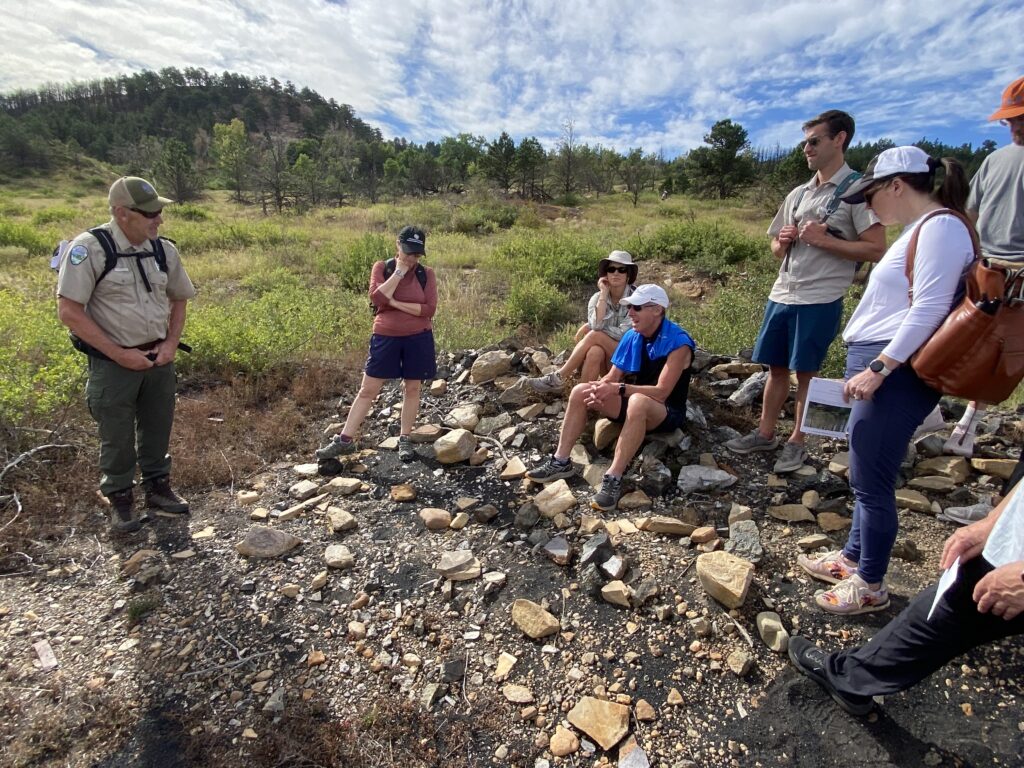

“We all go into health care wanting to help people and cure diseases on an individual level,” said Dr. Beth Gillespie, an internal medicine hospitalist at Denver Health and one of the program instructors. “Then once you start learning more about the impacts of climate on health, you realize that the health care system is contributing to the problem.”
She said Denver Health is aiming for a 50 percent reduction in climate emissions by 2030 and all the way by 2050. “It's really important for institutions to try and mitigate their emissions and at the same time, try to protect people, their patients, from local hazards, environmental hazards, such as poor air quality and extreme temperatures,” she said.
Hopes pinned on program
Dr. Christine James, an allergy and immunology physician with San Diego Health, said she’d seen the impact of climate change through allergy seasons, which are now happening earlier and lasting longer due to rising temperatures.
“Especially in San Diego, there are certain things that we’ll recommend, closing your window so you're not exposed to that pollen. But the thing is, a lot of people don't have air conditioning,” said James, who is one of five people who joined the climate medicine diploma cohort through a fellowship program.
She hoped the program would enhance her understanding of the challenges and solutions.
“I'm not sure where it (the program) is going to lead for myself, but I think being a nurse is very important,” said Loren Kelly, a nurse in Albuquerque, who teaches at the University of New Mexico and has worked with tribal communities.


She hoped to help strengthen the nursing profession’s involvement in action and advocacy with climate health, in a cross disciplinary, interprofessional, way.
“There's a historical precedent within our profession and how the nursing profession sees itself to be focused on the environment and environmental health,” she said. “That's an inspiration to then further develop it and say, ‘we're being called by present circumstances to do more, to have more political action in that area.’”
The program’s hope is that as their efforts spread, that more health practitioners get involved and educate about the burgeoning health risks.
“The climate health movement, namely health professionals who are focused on climate change as a threat to health, it's been developing over the past 15 or 20 years, but it's really gaining traction now,” said Maibach. “The people who are being trained here today, they are helping to spread that movement back to their communities because there are still lots of communities that don't have any health professionals who are focused in this way.”


